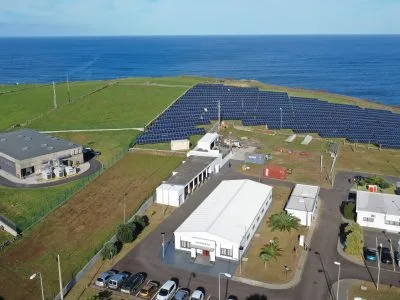Canadian Mine Site To Gain From Wind Energy With Storage
Canada’s largest wind turbine test project to rely on energy storage technologies – flywheel, battery, and hydrogen with hopes of enhancing wind penetration.
For the past months, project owner Glencore has been working on the installation of a 3-Megawatt, German-made wind turbine in its Raglan mining site. Currently, the facility is wholly dependent on diesel for its power requirements but once the turbine is completed and operational, the company hopes to cut diesel consumption initially by 5%.
The facility is nestled in the sub-arctic region of Nunavik, Quebec. Based on earlier studies conducted and current conditions in the area, wind energy could be the optimal renewable energy source for the facility.
The more interesting facet of the project is the planned integration of the three storage technologies. While wind turbine as a stand alone system could deliver modest wind penetration of 15%, incorporating storage systems could boost this level to as much as 55%.
Glencore will conduct further tests to assess if these storage solutions could withstand harsh weather conditions in the area.
Glencore Director Francois-Jean Verret said that pilot tests present opportunities to educate personnel and to conduct risk profiling. He further recommended the adoption of a “scaled approach” for similar energy storage projects where the mining industry is involved.
If you want to know more about this and other topics directly from end users of energy storage technologies join us at one of these annual events: The Energy Storage World Forum (Grid Scale Applications), or The Residential Energy Storage Forum, or one of our Training Courses.



